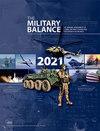第七章:中东和北非
Q3 Social Sciences
引用次数: 1
摘要
土耳其武装部队继续在叙利亚行动,在2020年初进行了空袭和地面行动,以阻止政府在伊德利卜省的推进。土耳其的军事力量也部署在利比亚,支持总部设在的黎波里的公认政府。与此同时,哈利法·哈夫塔尔将军的部队得到了埃及、俄罗斯和阿联酋的支持。外部行动者帮助提高了交战各方的军事潜力,它们的持续参与表明其行动能力正在增强。本文章由计算机程序翻译,如有差异,请以英文原文为准。
Chapter Seven: Middle East and North Africa
Turkey’s armed forces continued operations in Syria, conducting airstrikes and ground operations in early 2020 to halt government advances in Idlib province. Turkey’s military capabilities were also deployed in Libya, supporting the Tripoli-based recognised government. Meanwhile, General Khalifa Haftar’s forces obtained support from Egypt, Russia and the UAE. External actors helped improve the military potential of warring parties, and their sustained involvement indicated growing operational capacity.
求助全文
通过发布文献求助,成功后即可免费获取论文全文。
去求助
来源期刊

The Military Balance
Social Sciences-Political Science and International Relations
CiteScore
1.00
自引率
0.00%
发文量
18
 求助内容:
求助内容: 应助结果提醒方式:
应助结果提醒方式:


